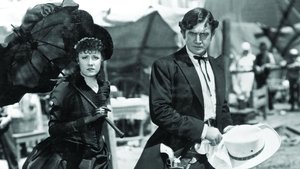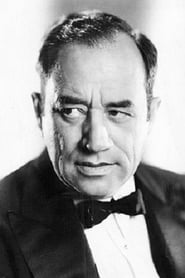Cast
View AllRichard Dix
as Yancey Cravat
Irene Dunne
as Sabra Cravat
Estelle Taylor
as Dixie Lee
Nance O'Neil
as Felice Venable
William Collier Jr.
as The Kid
Roscoe Ates
as Jesse Rickey (as Rosco Ates)
George E. Stone
as Sol Levy
Stanley Fields
as Les Yountis
Robert McWade
as Louis Hefner
Edna May Oliver
as Mrs. Tracy Wyatt
Judith Barrett
as Donna Cravat (as Nancy Dover)
Eugene Jackson
as Isaiah
Max Barwyn
as Sabra's Luncheon Greeter (uncredited)
Heinie Conklin
as (uncredited)
Edith Fellows
as (uncredited)
Crew
Director
- Wesley Ruggles
Writer
- Howard Estabrook
Producer
- William LeBaron
- Wesley Ruggles
Reviews
talisencrw
I know this gets VERY maligned these days as one of the very worst winners ever of the Best Picture Oscar, especially considering 'The Front Page' was the definitive best of those nominated that year, at the 4th Academy Awards ceremony (and that great films such as 'City Lights', 'Morocco' and 'Frankenstein' didn't even get nominated), but if you can take away Richard Dix's horrible overacting (I can't believe he was even nominated for Best Actor that year!) and uneven, sometimes lethargic or indifferent pacing and direction, certain scenes really pack a wallop, I'm glad that I watched it, and it's certainly not the worst Best Picture Oscar-winner I have seen thus far (that would probably be 'Shakespeare in Love', if I recall correctly, but I would love to watch all of them, just to be sure), and in some ways, I even tend to prefer it to the 1960 remake by Anthony Mann, even though I adore films I have seen that he's directed (although I'm not the biggest Glenn Ford fan in the world, so that probably evens things out). Irene Dunne is a delight, as always.
Though it certainly could have used a better editor (a good 30-40 minutes could have been sliced off, and no one would be the wiser), it certainly deserves at least one watch, especially if you're a history buff and want to see a decent depiction of how the Midwest was won.
Apr 12, 2016
Thematic Analysis
As a dramatic work, Cimarron examines complex human relationships and emotional struggles against the backdrop of a period setting that reflects societal issues of its time. The character development particularly stands out, offering viewers a chance to reflect on their own life journeys.
Director Wesley Ruggles brings their distinctive visual style to this film, continuing their exploration of themes seen in their previous works while adding new elements. Their approach to character development and emotional depth creates a viewing experience that rewards close attention.
Released in 1931, the film exists within a cultural context that now offers viewers historical perspective on the social issues of that era. Its reception demonstrates the diverse reactions to its artistic choices and its place in cinema history.
Did You Know?
- The production of Cimarron took approximately 19 months from pre-production to final cut.
- With a budget of $1.4 million, the film represented a significant investment in bringing this story to the screen.
- The final cut of the film runs for 123 minutes, though the director's initial assembly was reportedly 180 minutes long.
- The costume department created over 401 unique costume pieces for the production.
- The director insisted on using practical effects whenever possible, reserving CGI for only the most necessary scenes.
- The screenplay went through 8 major revisions before the final shooting script was approved.
Historical Context
- In 1931, when this film was released:
- The civil rights movement was gaining momentum in the United States.
- Rock and roll music was revolutionizing popular culture.
- The film industry was dominated by major studios, with independent cinema still in its early development.
How This Film Stands Out
While Cimarron shares thematic elements with other films in its genre, it distinguishes itself through its unique approach to storytelling, visual style, and character development.
Unlike Broken Threads, which takes a more conventional approach to its subject matter, Cimarron subverts genre expectations by exploring its themes with greater nuance.
While films like Renegade and Dancers in the Dark explore similar territory, Cimarron stands apart through its distinctive directorial vision and pacing.
This film's unique contribution to cinema lies in its thoughtful balance of entertainment value and thematic depth, making it a valuable addition to its genre.
Details
- Release Date: January 26, 1931
- Runtime: 2h 3m
- Budget: $1,433,000
- Revenue: $1,383,000





















